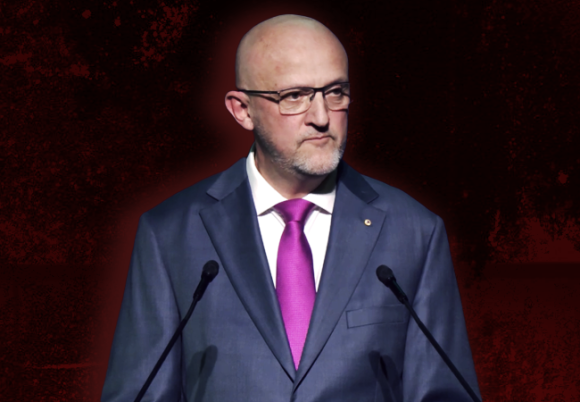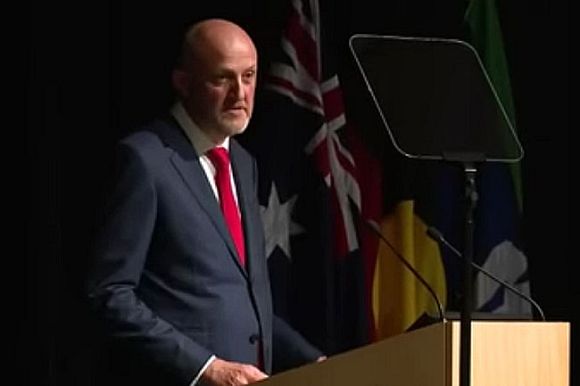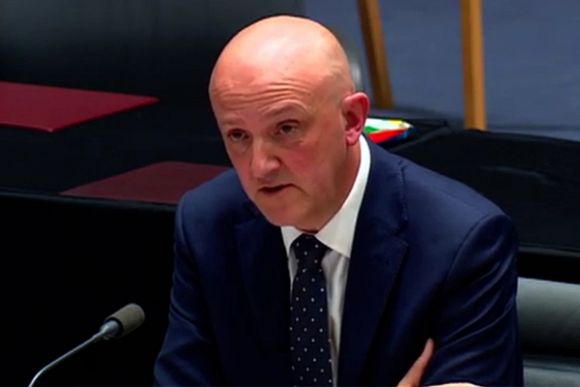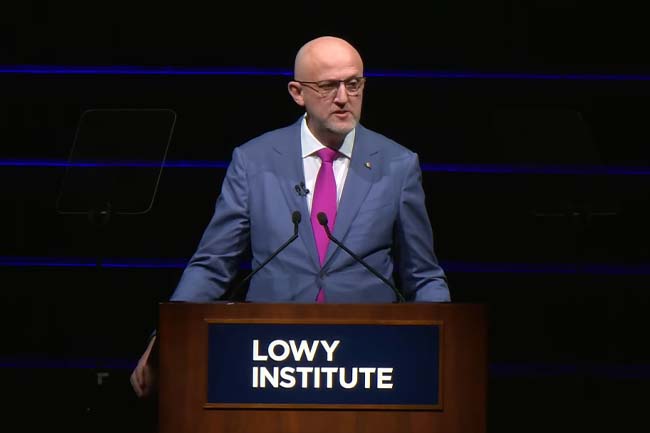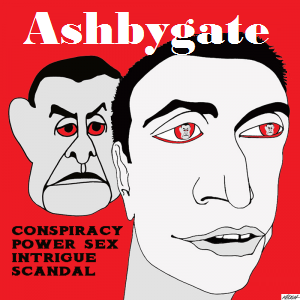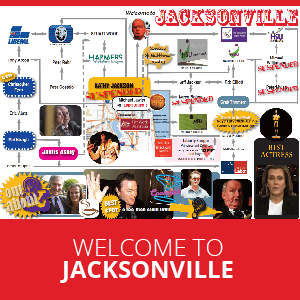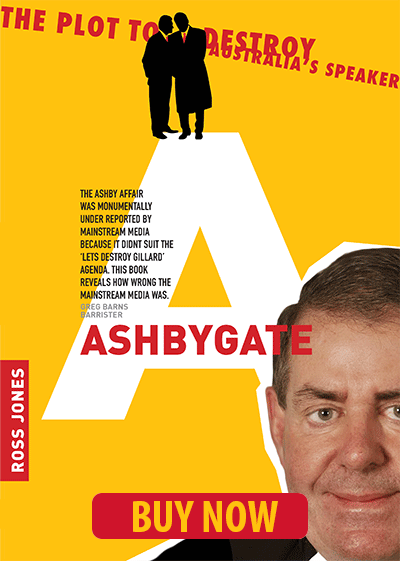During his recent Lowy Lecture address, ASIO chief Mike Burgess made questionable claims about social cohesion, trust in institutions and values, writes Jaron Sutton.
EVERY YEAR in February, the Australian Security Intelligence Organisation (ASIO)’s director general of security, Mike Burgess, delivers a public address called the Annual Threat Assessment. In the address, which Burgess initiated in 2020, the spy chief outlines what ASIO assesses to be the major threats faced by Australia and throws in an operational success story for good measure.
It’s a good thing that Burgess initiated these annual addresses. Intelligence agencies are quarantined from public scrutiny in a way that other organs of state are not. Defence strategy and procurement, for example, are canvassed quite openly in Australia. There is now, thanks to AUKUS, a cottage industry of security pundits who publicly share their views on which submarines Australia should buy and why.
Only last week, the ABC’s Four Corners program ran an episode in which the vice chief of the Australian Defence Force (ADF) pointed out the location of Australia’s seven northern airbases on a map and revealed which base accommodates the F-35 fighter jets and the MQ-4 Triton surveillance aircraft. As an organisation, the ADF is also subject to rigorous public scrutiny, whether it be about governance failures, serious issues like the rate of defence suicides, or allegations of systemic sexual violence.
And yet, there’s a generally accepted view around that whatever goes on under the hood organisationally at our intelligence agencies, the Australian public has no right to know about it. It’s good, therefore, that Burgess steps out once or twice a year to communicate to the Australian public, even if he can still bat away moderately probing questions by resorting to the old refrain about not discussing sensitive intelligence matters. In Mike we must trust.
Last week, Burgess broke the cadence of his annual threat assessments to deliver the 2025 Lowy Lecture. There is much in Burgess’s Lowy address that is worthy of close scrutiny, particularly because he has now waded into territory – social cohesion – that he himself acknowledged is “not one of the specific matters ASIO is empowered to investigate and assess”. But assess it he has.
In his address, Burgess focused on the risk posed by a purported “erosion” of social cohesion and its role in aggravating existing threats like foreign espionage and interference (and vice versa). Burgess mentioned the word cohesion 18 times in his Lowy address. It appeared only four times in his February threat assessment. It didn’t appear once in his 2024 threat assessment. Unfortunately, Burgess didn’t define social cohesion in his address, nor did he provide any evidence to support the claim that it was eroding.
Thankfully, academics track this kind of stuff. In the conclusion to the most recent Mapping Social Cohesion report by the Scanlon Foundation Research Institute, the authors state that ‘most of our indicators of social cohesion have been reasonably stable over the last one to two years’. This is precisely the period about which Burgess seems so exercised.
In his address, Burgess also claimed that there is a declining trust in institutions in Australia. Recent OECD data suggest the opposite is the case, with trust in institutions in Australia and other OECD countries in fact rising between 2021 and 2023. For its part, the Mapping Social Cohesion report found that trust in government in Australia rose from 2024 to 2025.
One can appreciate an intelligence chief refusing to provide details about most intelligence matters, but verifiable claims about wider social trends deployed in support of a broader thesis about an eroding national security environment should be backed by rigorous evidence. This is especially the case when the person making those claims is simultaneously warning about the dangers of the spread of misinformation. Perhaps Burgess has credible research to the contrary. If so, he should share it.
During the Q and A, Burgess also overstepped the mark when he stated in response to a question by Lowy Institute executive director Michael Fullilove about a purported decline in civil discourse that “there’s something not quite right with all our values”.
Which values was Burgess referring to? Is opposition to genocide one of them? Should the Australian public have their values questioned by an intelligence official who congratulates, as Burgess did during the Lowy Q and A, the intelligence service of a country that the UN and many other credible experts have found to be committing a genocide?
Are we entitled to ask Burgess what role ASIO assesses that very same service played in the committing of that genocide? Are we further entitled to ask Burgess whether ASIO assessed that Israel’s genocide (and the Australian Government’s response to it) has played any role in fostering what his organisation assesses is a fracturing of community cohesion?
If Burgess wanted social cohesion to be the main takeaway from his speech, he didn’t do himself any favours by re-stating claims that he had made in February about foreign agencies attempting lethal targeting in Australia.
In his Lowy address, Burgess claimed that:
“ASIO assesses there is a realistic possibility a foreign government will attempt to assassinate a perceived dissident in Australia. This threat is real. We believe there are at least three nations willing and capable of conducting lethal targeting here.”
As Michael Fullilove put it to Burgess in the Q and A that followed, that claim was “the most dramatic thing that you said tonight... and I’m sure that this will be leading tomorrow’s headlines”. Fullilove was right about the media response.
Those watching the Q and A or reading the media coverage that followed the address would be forgiven for thinking that Burgess’s “dramatic” revelation was new information. But it wasn’t. What was missed by the media, and by Fullilove himself, it seems, was that Burgess had made an almost identical claim nine months earlier. The media should have known this; they reported on it at the time. So what did Burgess say in February?
In his February 2025 Annual Threat Assessment, Burgess said the following:
“ASIO investigations have identified at least three different countries plotting to physically harm people living in Australia. In a small number of cases, we held grave fears for the life of the person being targeted.”
Burgess went on to describe an attempt by an unnamed foreign intelligence service to lure an Australia-based human rights activist to a third country with the goal of “seriously injuring or even killing” them. He also cited an attempt in 2024 by an unnamed regime to “harm or possibly kill one or more individuals on Australian soil”. According to Burgess, both plots were foiled by ASIO.
It’s surprising, then, that the Australian media ran Burgess’ remarks as if they were a new and dramatic revelation. Some closer scrutiny of Burgess’s questionable foray into sociology might have been a better place for the media to focus.
Jaron Sutton is an Arabic language scholar and writer with an interest in Australian politics and media, climate change, the Arab world, and history.
 This work is licensed under a Creative Commons Attribution-NonCommercial-NoDerivs 3.0 Australia License
This work is licensed under a Creative Commons Attribution-NonCommercial-NoDerivs 3.0 Australia License
Support independent journalism Subscribe to IA.

Related Articles
- ASIO’s endless threats and the power of fear
- ASIO boss stirs anti-China campaign with spy report
- ASIO shouldn't be expected to fix our far-right extremism problems
- ASIO and the Clown Counsel
- Sub-tropical Fascism (Part 2): Media insecurity



